Category Archives: Reef
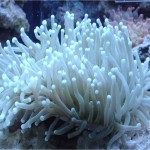
Long Tentacle Plate Coral
Scientific Name: Heliofungia Actiniformis
Common Name: Long Tentacle Plate Coral, Long Tentacle Fungia Coral, Long tentacle Heliofungia Plate Coral
Type of Coral: LPS (Large Polyp Stony Coral)
Lighting: Moderate
Flow: Low/Moderate to Moderate
Care Level: Moderate
Temperament: Aggressive
Appearance
As the name suggests, the long tentacle plate coral is shaped a lot like a plate, with a round and somewhat flat body which rises a little in the center where the mouth is. It is also covered with long tentacles (with knob like structures on the tips) which can give it an appearance very similar to many anemones like the magnificent anemone for example. Long tentacle plate corals are most commonly brownish to olive green in color.
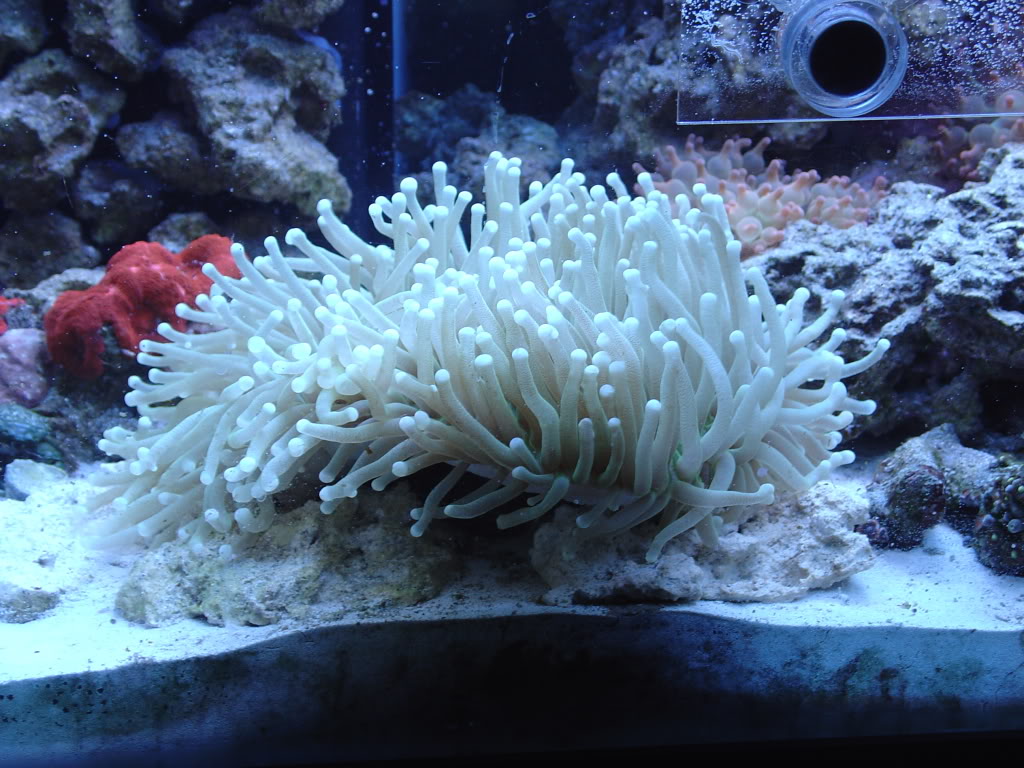
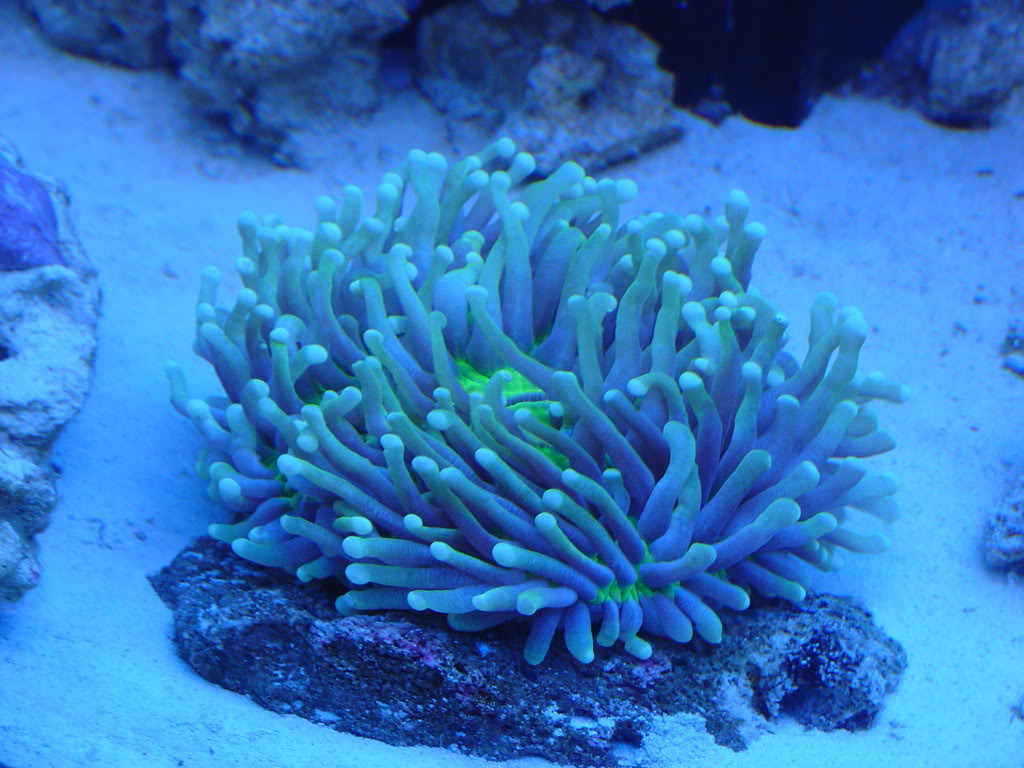
Water Conditions
The below link highlights typical water conditions long tentacle plate corals, just as with most LPS, will require. As this is a moderately difficult coral to keep, you should ensure your dKH, Cal and Mag levels are maintained at all times with minimal nitrate and phosphate levels. As this coral also has a calcified skeleton, it will consume calcium from your water. In set-ups with a good amount of LPS corals, it is not uncommon to have to dose dKH and Cal in order to keep the water parameters in line. With only a few LPS corals, a good water change schedule may be enough to maintain your parameters.
https://www.reefaquarium.com/2013/the-basics-of-marine-aquarium-water-parameters/
General Information
Long tentacle plate corals, as with most other LPS corals, should be added to mature aquariums. Provided all their requirements are met, they can grow to about 8 to 10 inches. Long tentacle plate corals typically do best when place on a smooth and sandy substrate on the bottom of the aquarium
This is a very aggressive LPS coral. It will release long sweeper tentacles that will extend a few inches beyond its base. They can also over inflate their body’s with water to over twice their normal size, which can allow them to move a little. These two factors would require a distance of around 5 inches from other corals.
Clownfish have also been known to host in long tentacle plate corals in aquariums that do not have anemones. Although this will not harm the clownfish, this can sometimes stress the coral to the point where it could become damaged and prone to infections.
These corals can also benefit from the occasional feeding of meaty foods, or pellet food meant for corals. I would always recommend a weekly (or so) feeding for this coral. The below link can explain how to feed these corals in more detail
https://www.reefaquarium.com/2012/feeding-corals/
As with all corals, the exterior slime coating can be a skin irritant or even highly toxic to humans so please, handle all corals with care. I would recommend wearing rubber gloves whenever you handle corals
The below pictures are of one of my long tentacle plate corals inflating itself
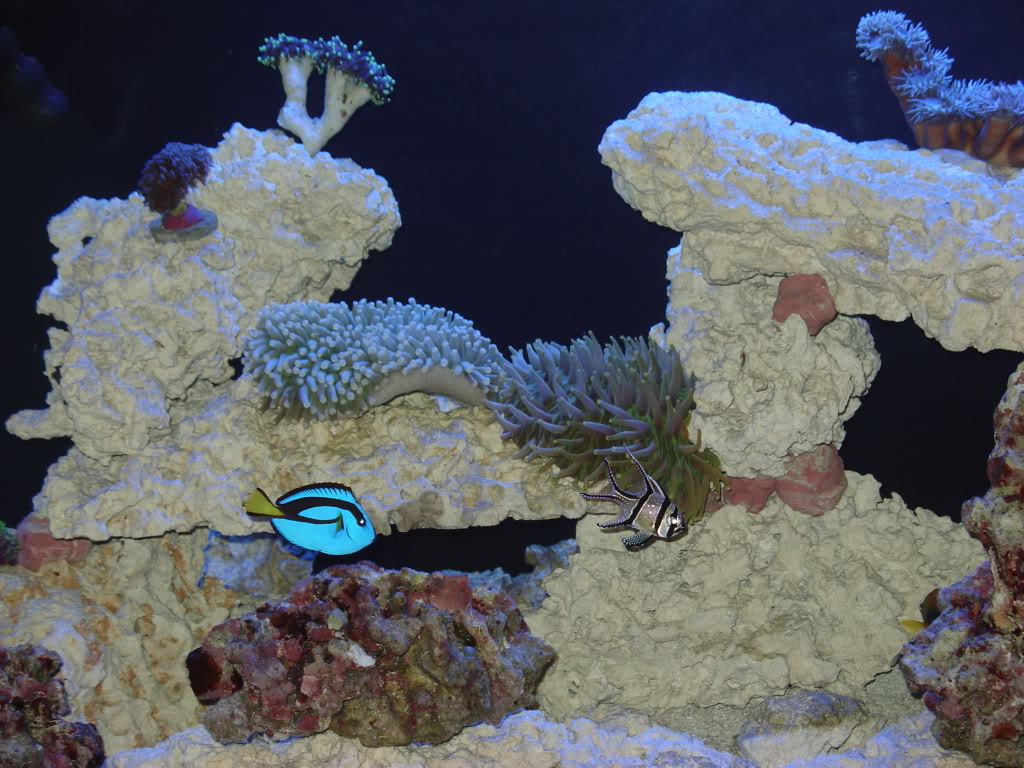
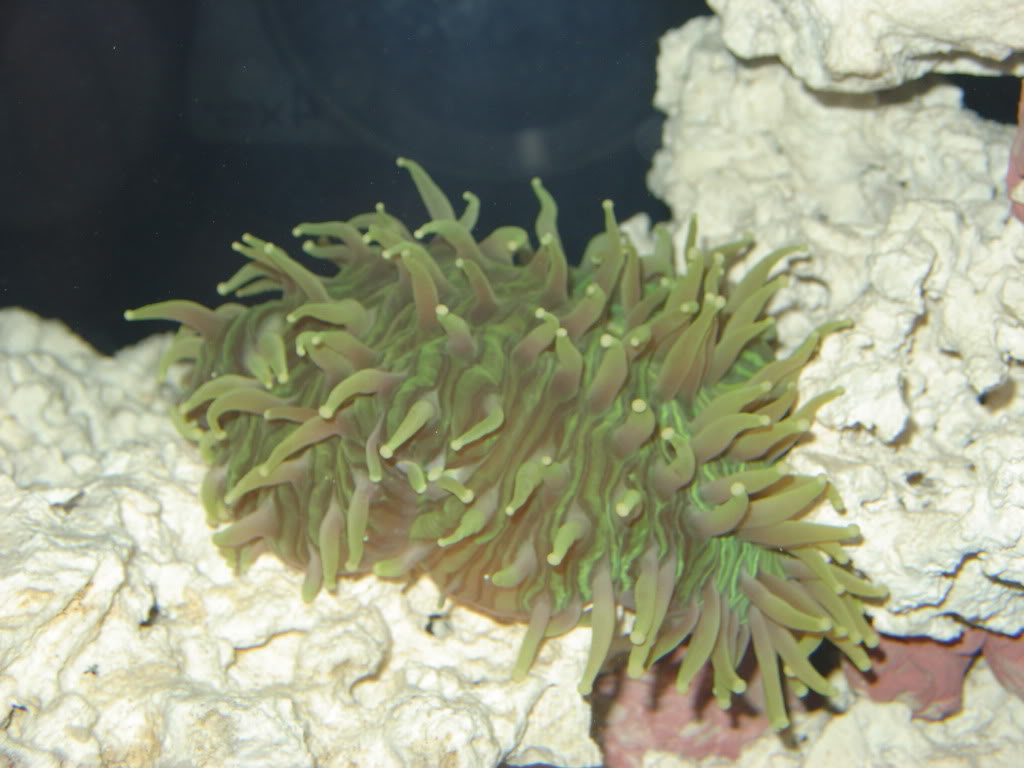
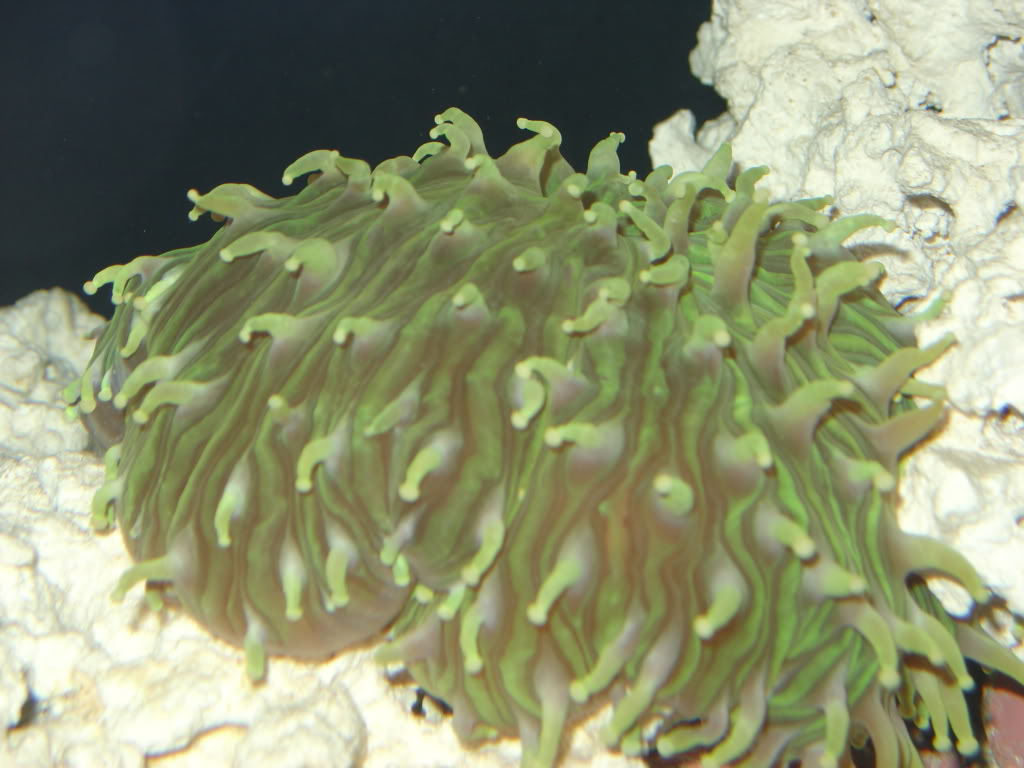
Fragging
Plate corals should not be fragged.
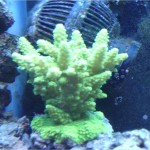
Acro Coral
Scientific Name: Acorpora Humilis
Common Name:, Acorpora, Acro Coral, Humilis Acro Coral
Type of Coral: SPS (Small Polyp Stony Coral)
Lighting: High
Flow: High
Care Level: Very Difficult
Temperament: Peaceful
Appearance
The acro coral is a branching SPS coral, as with many other commonly found SPS corals. The shape this branch coral can take will vary between each individual coral from a bush like structure to having fewer and thicker branches. The thicker branches are more common acro to find. It can range in color from a brown or cream color to a bright neon greens along with a few other less commonly found colors. With over 300 different acro species that are currently documented, it can be a little challenging to properly identify all the different acro corals out there. Most often, the only noticeable difference can be the coloring and growth patterns.
The below arco frag that I bought doubled in size in less than one year
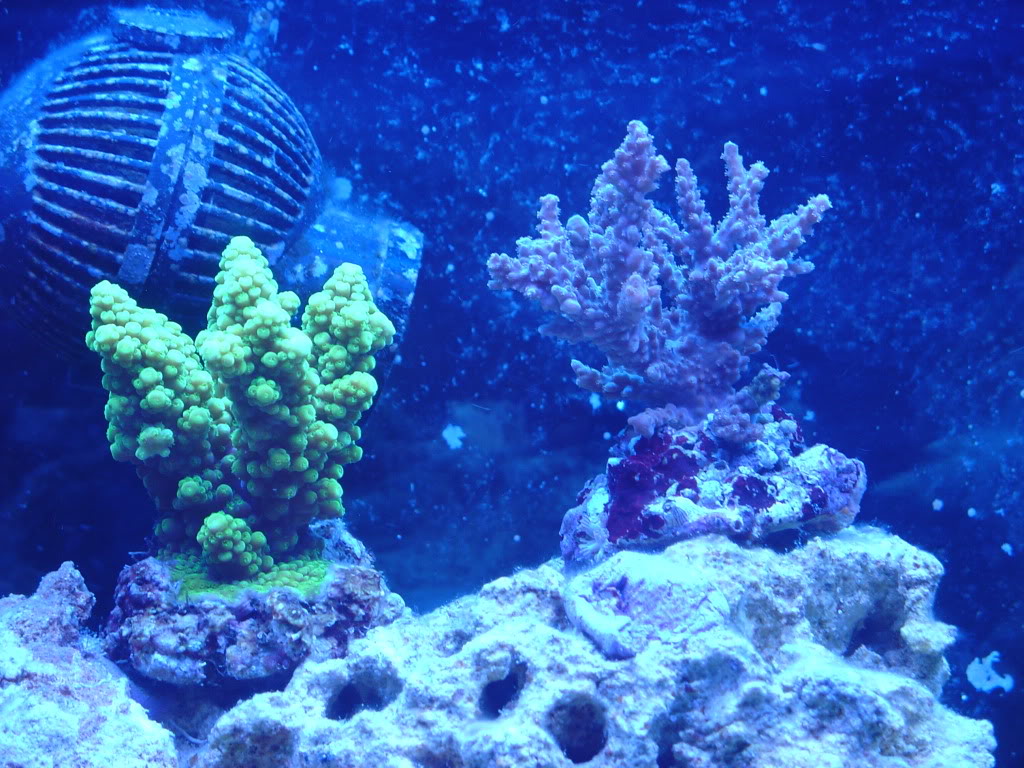
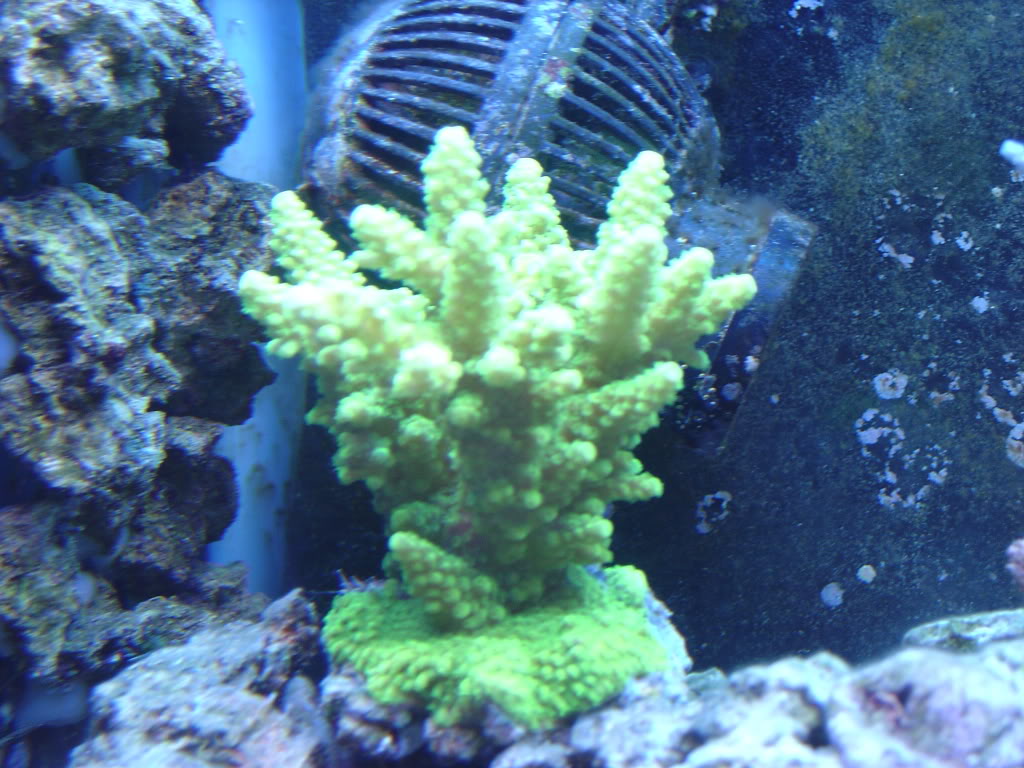
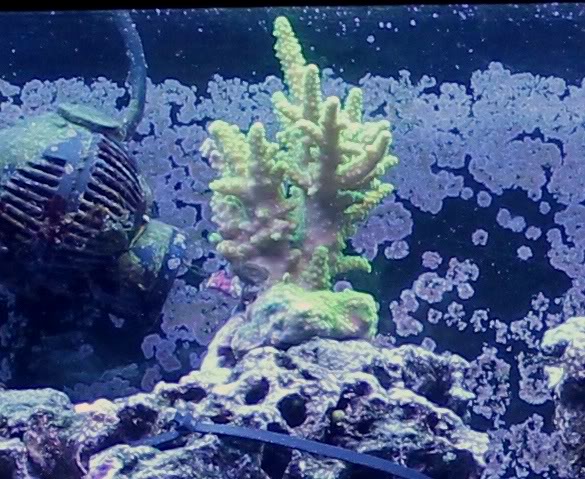
Water Conditions
The below link highlights typical water conditions the acro coral, as with most SPS, will require. As this is a very difficult coral to keep, you should ensure your dKH, Cal and Mag levels are maintained at all times with nitrate and phosphate levels almost undetectable by very good quality test kits. These SPS will be affected by changes in water chemistry so you will need to ensure your parameters are also very stable. As this coral also has a calcified skeleton, it will consume calcium from your water. In set-ups with a good amount of SPS corals, it is not uncommon to have to dose dKH and Cal in order to keep the water parameters in line.
https://www.reefaquarium.com/2013/the-basics-of-marine-aquarium-water-parameters/
General Information
Acro corals as with all other SPS coral, should only be added to mature aquariums. Provided all their requirements are met, they can grow very large to well over 12 inches. The only thing that will limit their growth is the size of your aquarium. In the wild they can grow to become several feet, so you can expect to have to trim back (or frag) your acro at some point. Acro corals typically do best when placed on top of rocks, closer to the aquarium lighting and in areas of higher flow. When provided with the correct conditions, they will grow very fast in an aquarium.
While the acro coral will not sting any other corals, they can still be harmed by other corals stinging them, it would be a good idea to have your acro placed a distance of around 3 to 4 inches from other corals
Generally speaking, SPS corals can also benefit from the occasional feeding micro-plankton designed for filter feeders
Fragging
As with all SPS, they can be fragged with very good success assuming the environmental conditions in the aquarium are suited to SPS corals
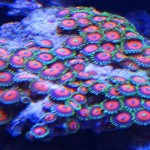
Zoanthid Corals ( Zoas )
Scientific Name: Zoanthus SP
Common Name: Zoanthids, Zoas.
Type of Coral: Softie
Lighting: Moderate and Moderate to Low
Flow: Moderate
Care Level: Easy
Temperament: Peaceful to Semi-aggressive
Appearance
These corals can come in some spectacular range colors and color combinations, among the most amazing colors to be found in any soft coral. Some zoas can have up to three different colors on them: one around the outer edge of the head, one on the head, and a third in the center of the head. Zoas stay fairly small in size (less than 1 inch) but the colony can easily grow and expand.
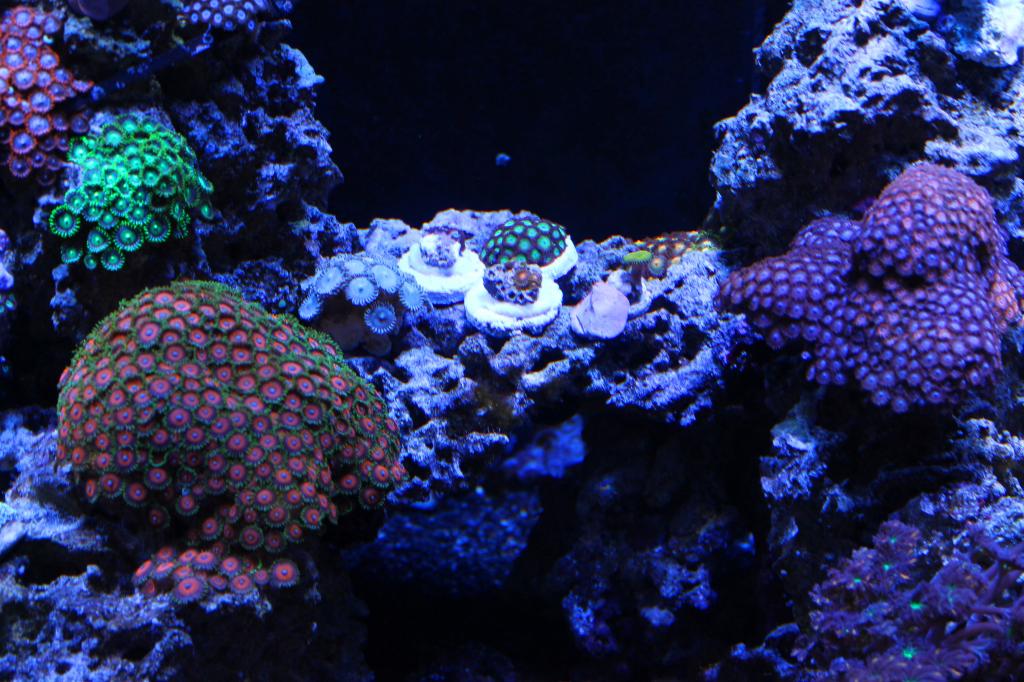
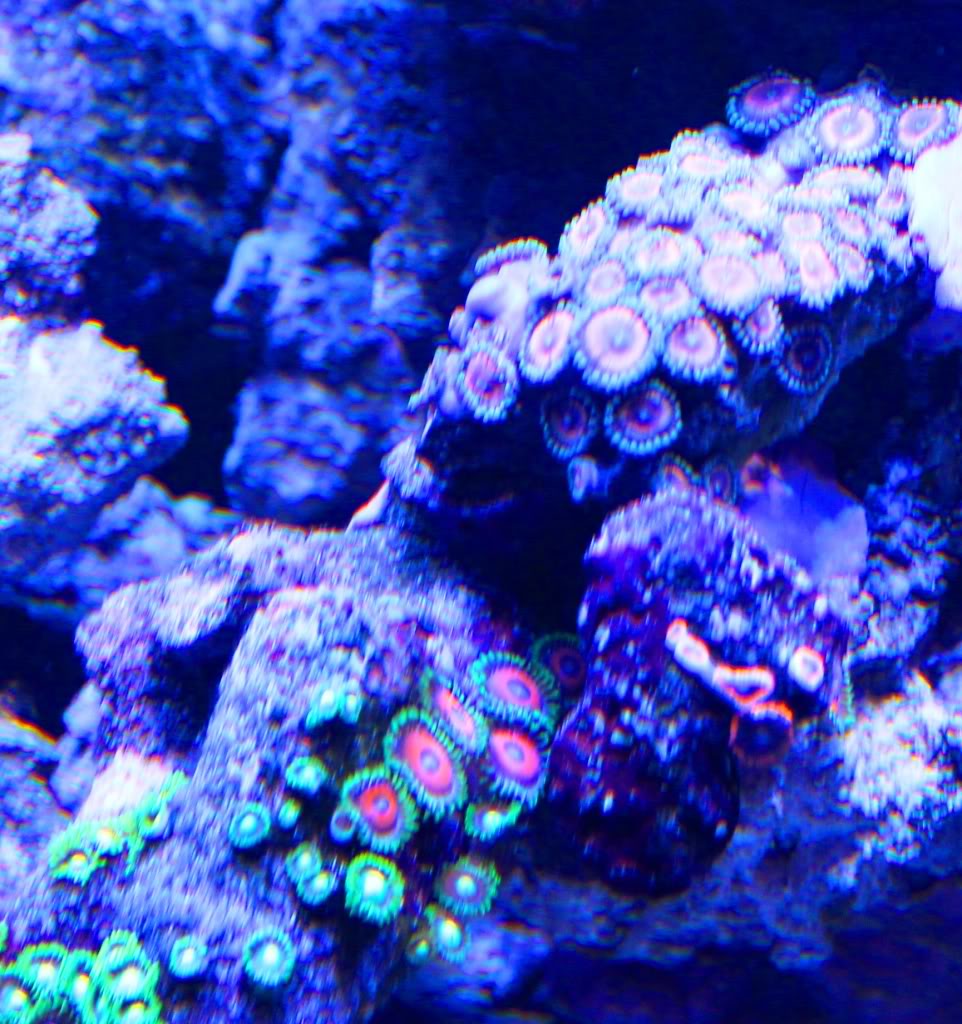
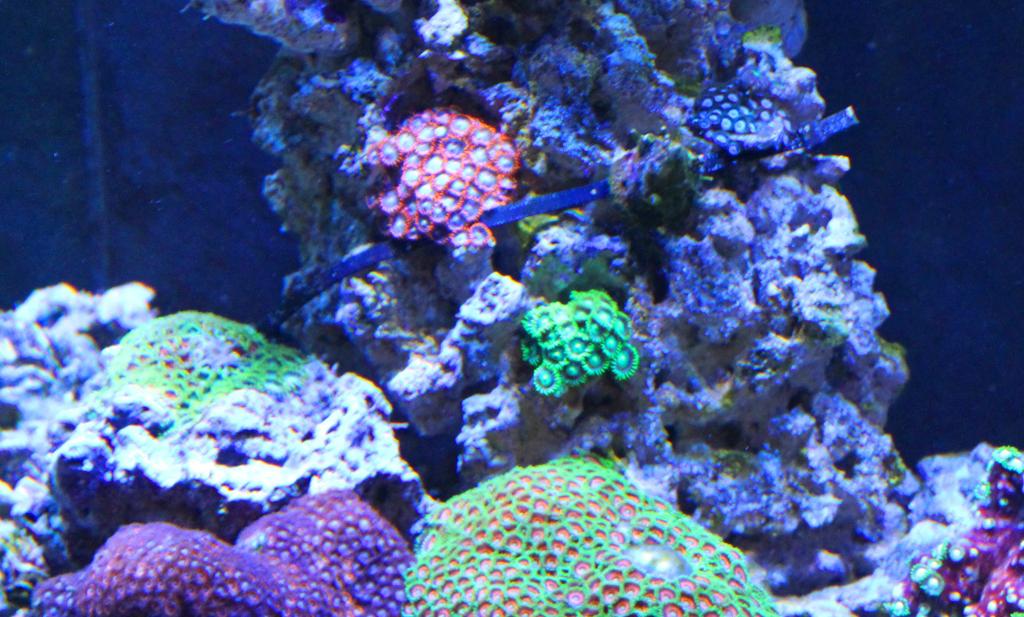
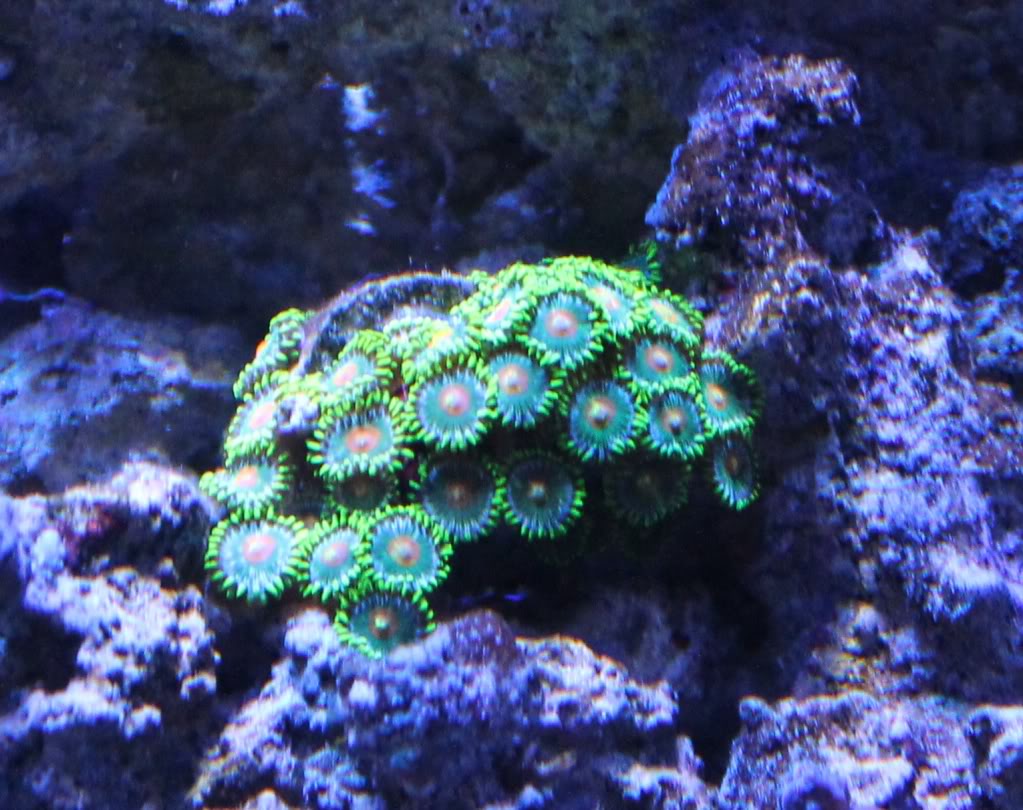
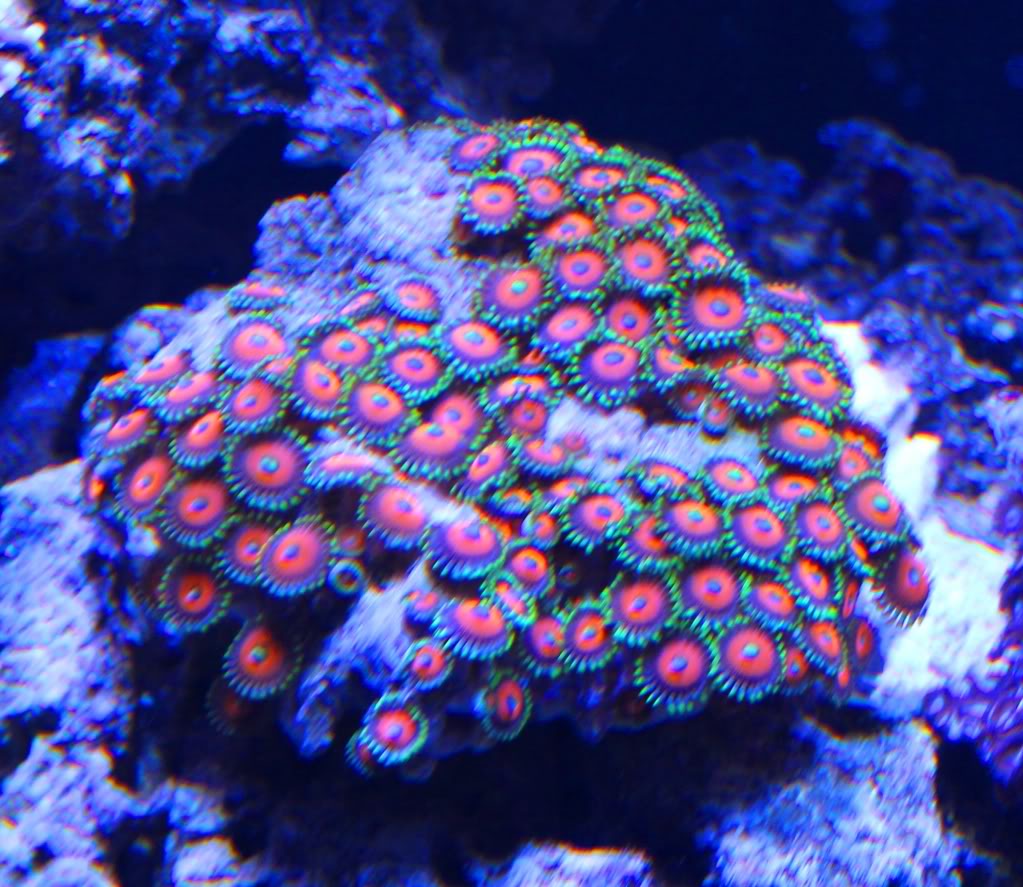
Water Conditions
The below link highlights typical water conditions zoas will require. I have had the best luck when they were kept in water with 1 to 2 ppm of nitrate when lighting and flow requirements were meat and all other water parameters in line as described in the below link. They have been known to tolerate higher levelers of nitrate for shorter periods of time.
https://www.reefaquarium.com/2013/the-basics-of-marine-aquarium-water-parameters/
General Information
Zoas are colonial type corals, meaning they form a colony of many individual polyps all connected together. As they do not have a calcified skeleton structure, they can be more tolerant of swings in the alkalinity, calcium, and magnesium when compared to other corals. However, they will not be very tolerant to swings in PH, Temp, or salinity which is no different than any other coral or fish.. This makes zoas are a very hardy soft coral placing them amount the easier to keep corals and making them an excellent choice as corals for beginners. They have also been known to grow very fast, almost like an invasive coral. Zoas are also the least aggressive when it comes to defensive abilities. They can quite frequently become damaged and even start losing heads when they fall victim to another coral’s sting or exposed to those toxins. In addition, the protective slime like coating that is on the zoas are a favorite delicacy among the “coral nipping” fish. This corals typically dies when a fish removes the outer slim coating from the coral.
As with all corals, the exterior slime coating can be a skin irritant or even highly toxic to humans so please, handle all corals with care. I would recommend wearing rubber glove whenever you handle corals
Fragging
Zoas can be easily fragged with very high success
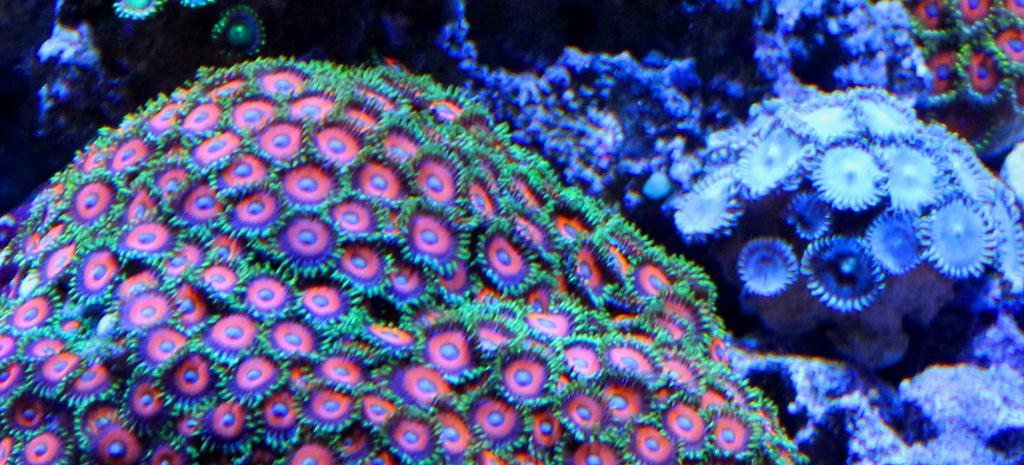
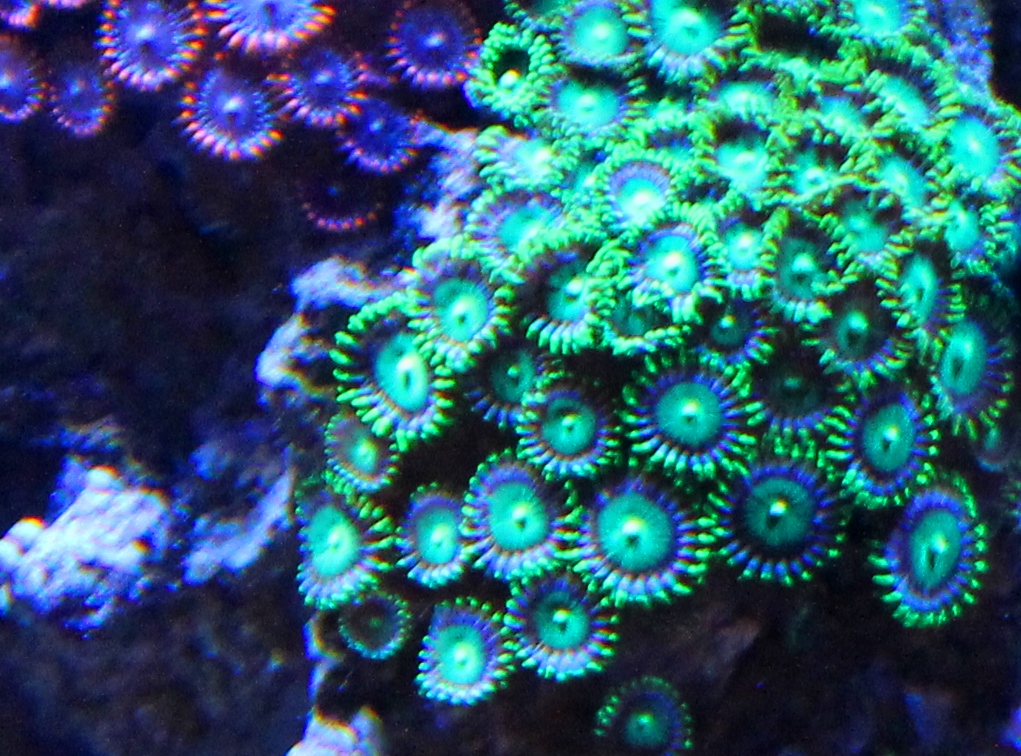
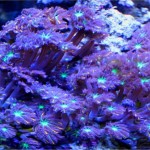
Clove Polyps
Scientific Name: Clavularia Sp
Common Name: Clove Polyps.
Type of Coral: Softie
Lighting: Moderate and Moderate to Low
Flow: Moderate and Moderate to Low
Care Level: Easy
Temperament: Peaceful
Appearance
They only get to about 2 to 3 inches in height and have a head size of about ½ to ¾ inch. These two can have slight color variations. The heads can have a bright almost neon coloring to them while the tentacles branching off the heads can have a colored line running down the center of them that may or may not have different coloring as compared to the coloring in the center of the head. In contrast, some glove polyps will only have one solid color throughout the whole coral. The heads can retract into the base of the coral making it look like a purple lumpy spot on your rocks.
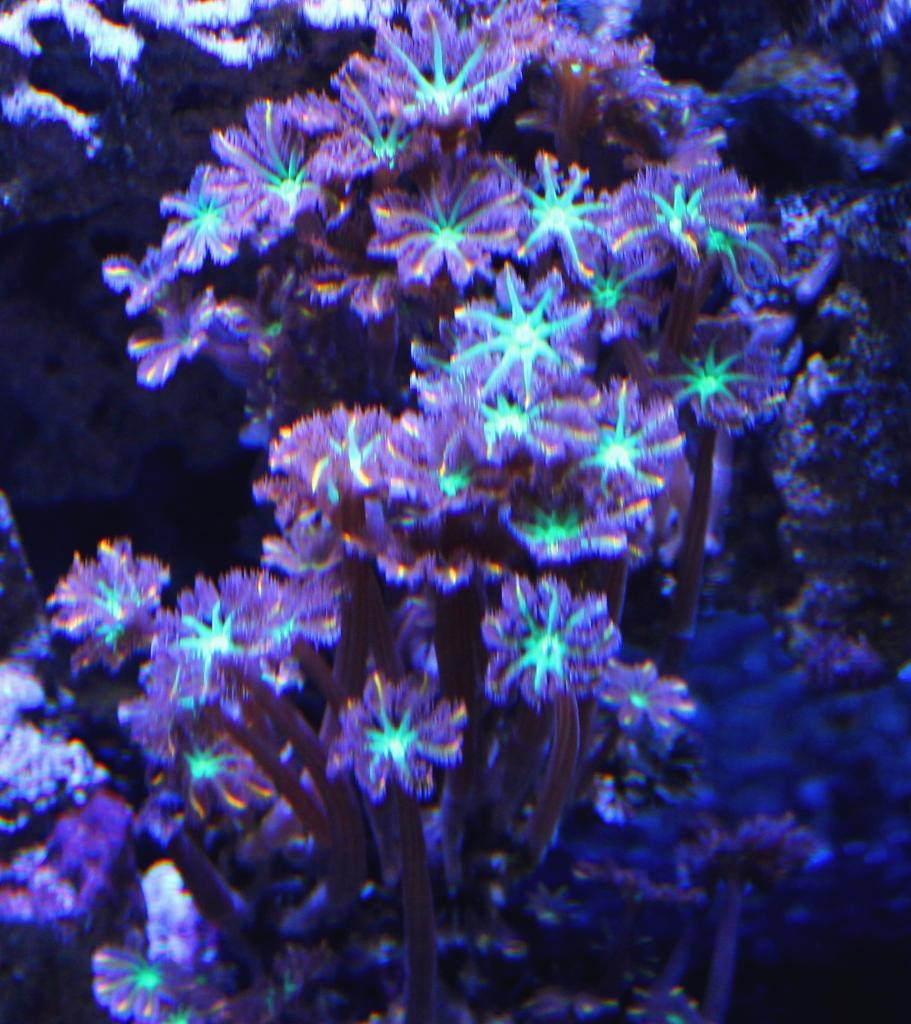
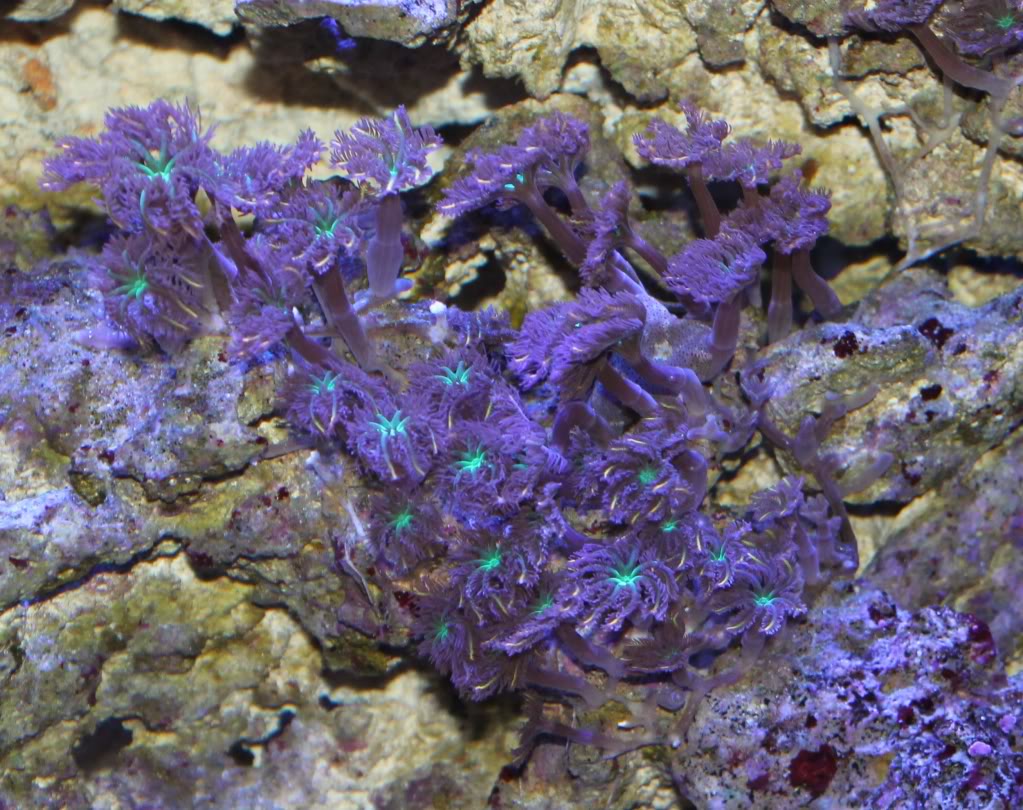
Water Conditions
The below link highlights typical water conditions clove polyps will require. I have had the best luck when they were kept in water with around 1 ppm of nitrate when lighting and flow requirements were meat and all other water parameters in line as described in the below link.
https://www.reefaquarium.com/2013/the-basics-of-marine-aquarium-water-parameters/
General Information
Clove Polyps are colonial type corals, meaning they form a colony of many individual polyps all connected together. As they do not have a calcified skeleton structure, they can be more tolerant of swings in the alkalinity, calcium, and magnesium when compared to other corals. However, they will not be very tolerant to swings in pH, Temp, or salinity which is no different than any other coral or fish..
Clove polyps are a very hardy soft coral placing them amount the easier to keep corals and making them an excellent choice as corals for beginners. They have also been known to grow very fast, almost like an invasive coral. Clove polyps are also the least aggressive when it comes to defensive abilities. They can quite frequently become damaged and even start losing heads when they fall victim to another coral’s sting or exposed to those toxins.
As with all corals, the exterior slime coating can be a skin irritant or even highly toxic to humans so please, handle all corals with care. I would recommend wearing rubber glove whenever you handle corals
Fragging
Clove polyps can be easily fragged with very high success
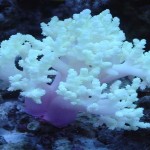
Colt Coral
Scientific Name: Cladiella SP
Common Name: Colt Coral, Cauliflower Corals.
Type of Coral: Softie
Lighting: Moderate and Moderate to Low
Flow: Moderate and moderate to high
Care Level: Easy
Temperament: Semi-aggressive
Appearance
Generally speaking, leather corals are a soft skinned coral with visible polyps all over their skin. A leather coral can look one way in a aquarium and then (over time) look very different when placed in another tank based only on the water parameters, lighting and flow.
Colt Corals can look similar to a finger coral, but the shape of the polyps and the tips of the fingers make it look more like cauliflower. They will more commonly range in color from a brownish red to a light pink with the polyps a little brighter color than the base. They don’t get quite as big as a finger leather but will still need 12 to 14 inches of space in your tank based on its size potential and growth rates.
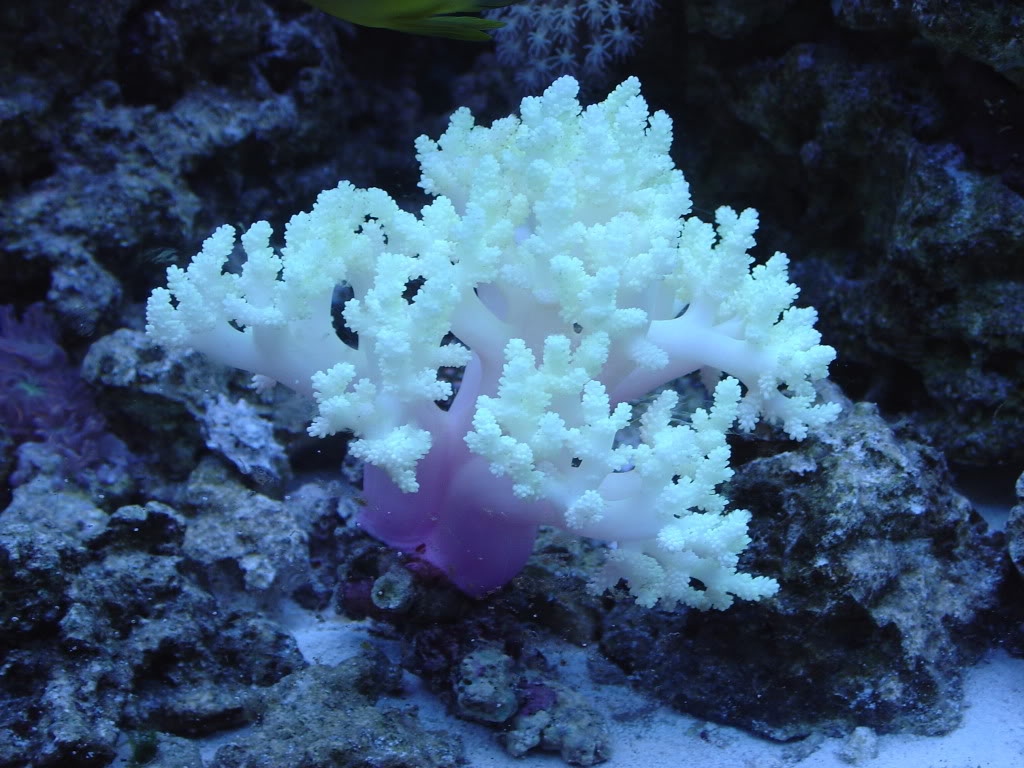
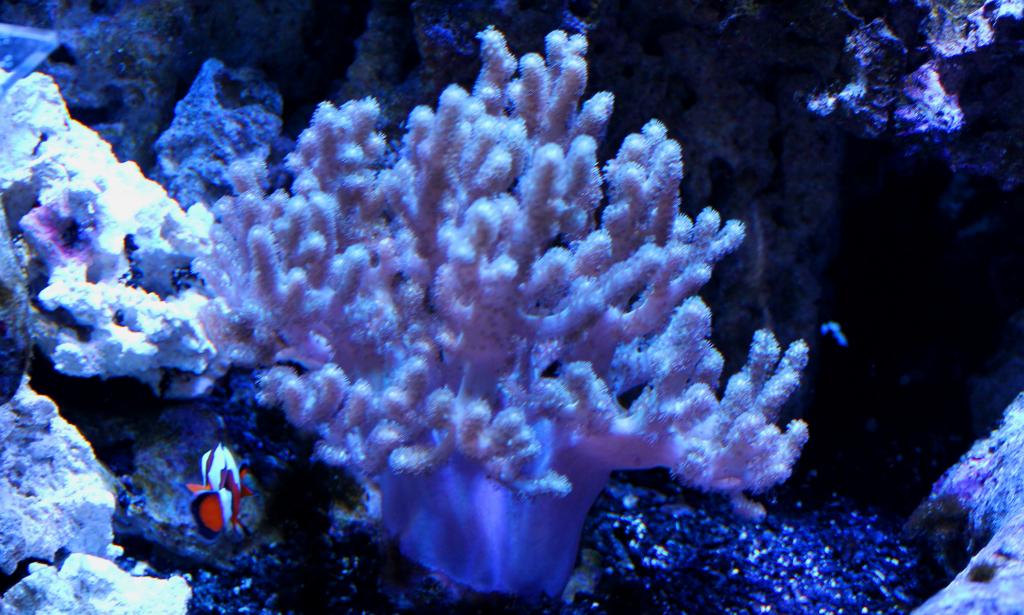
Water Conditions
The below link highlights typical water conditions this leather coral will require. I have had the best luck when they were kept in water with 1 to 2 ppm of nitrate when lighting and flow requirements were met and all other water parameters in line as described in the below link.
https://www.reefaquarium.com/2013/the-basics-of-marine-aquarium-water-parameters/
General Information
As they do not have a calcified skeleton structure making them a little more tolerant of some water parameters like calcium. However, they will not be very tolerance to swings in pH, Temp, or salinity which is no different than any other coral or fish. They are a very hardly coral making them a good choice for people new to the hobby. Most leathers have some very effective defensive abilities. Leathers commonly have the ability to sting other corals and some fish along with emitting chemicals to ward off other corals from entering their space. For this reason it is very important to understand how big your leather coral can get and plan for enough space between your leather coral and other corals. Just leaving a few inches may not always be enough as some leathers can get surprisingly large. It would also be a good idea to have some carbon in your set-up in case your leather will start to emit defensive chemicals. This is one coral that will be the least likely to be picked on by most fish in the hobby.
As with all corals, the exterior slime coating can be a skin irritant or even highly toxic to humans so please, handle all corals with care. I would recommend wearing rubber glove whenever you handle corals
Fragging
This leather can be easily fragged with very high success

Old Tank Syndrome, Fact or Myth ?
Based on many people taking the time to document this and seeing the evidence they present, it sure dose present a compelling case for old tank syndrome. So why does this not happen to all aquariums?
Continue reading
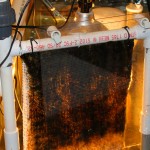
Some Algae Scrubber Basics
Sometimes there just is no substitute for Mother Nature. You could make an argument that this is one of those times. While the use of algae scrubbers as a form of filtration certainly is not a new concept in the hobby, it remains a very effective and easy approach to reducing nitrates and phosphates from your marine aquarium. I thought I would share my approach to building and using an algae scrubber and what I have learned about some algae scrubber basics

Marine Aquarium Maintenance
I have seen this question asked many times by people who are considering setting up a marine tank. I thought I would put together a short article to give you an idea of the typical marine aquarium maintenance that I have completed and learned about along the way.
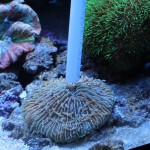
Feeding Corals
Corals (with a few exceptions) will do very well without being feed when provided with the proper environment within a mature set-up. Feeding corals will often accelerate their growth. When it comes to feeding, I will place corals into one of two groups, those with large mouths (large polyp corals like brains or plates), and those with very very small mouths (like stony polyp corals). I have a different approach to feed each.
Continue reading
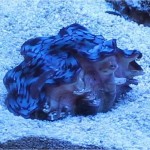
Spot Feeding Marine Clams
There are a lot of different opinions out there about the manual feeding of clams. I have had great success with weekly (or so) feedings until the clam is about 4 inches in size. I only feed monthly from 4 to 5 inches, following the below process. The below process can also be used for the spot feeding of other filter feeders and some corals.
Continue reading